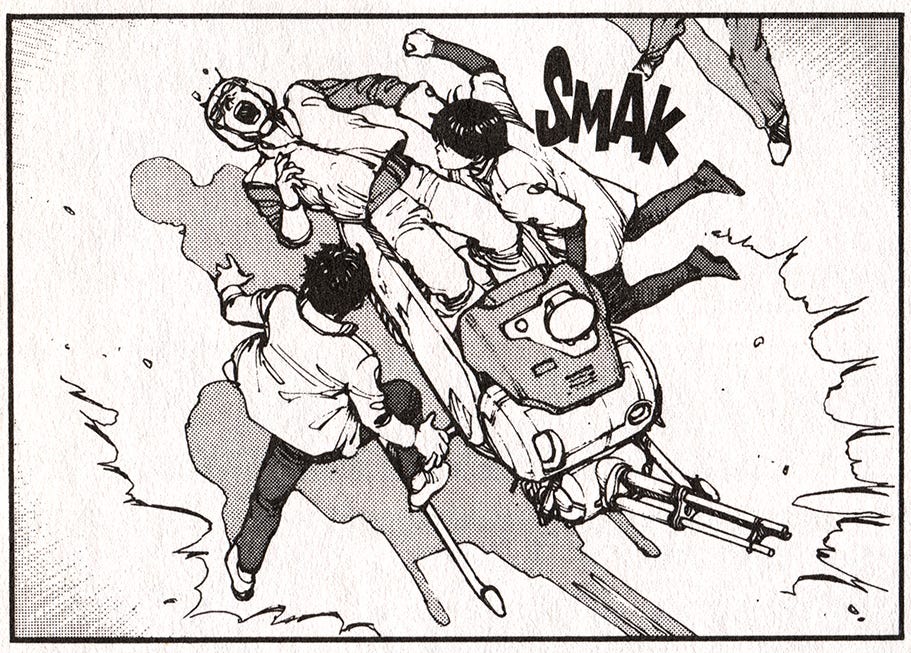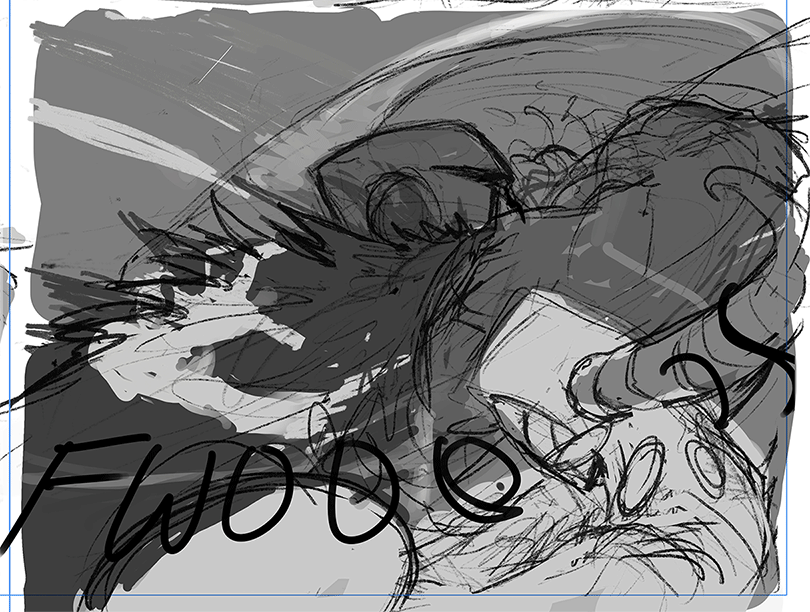Today’s article is about how I’m approaching action in Quiet: Level One, but I have two things to tell you first:
To celebrate the release of Fallout, the Amazon series (which is fantastic by the way), I finally released my Fallout video, which you might remember from my post Detour in a Ruined World. Here it is for your enjoyment - and don’t forget to follow!
I should also note that I’m giving away one autographed Pip-Boy as well, but by being a member of this Substack, you are already in the running to win it!
And for the second piece of news…
Quiet: Level One now has a pre-launch page on Kickstarter! There’s not much to see at the moment, of course, but the fact that it’s up there feels like a huge milestone. If you have a moment, please click on the link and add your name to the Follower list? Note that this is not a commitment of any kind; it’s merely a formal registration of your interest in the graphic novel, and way to boost the Kickstarter algorithm!
Hooray!
Okay, on to today’s article:
Starting a Fight (Scene)
I’ve drawn only one fight scene in my life, at the age of 11, and it was between a bandana-wearing werewolf named Mantis, and what appears to be a velociraptor.
Mantis, it should be noted, was a hero of my own invention when I was a kid. He was actually a robot under all that fur (although why he appears to have pecs and abs on his back, I really couldn’t say). Anyhow, I wanted to draw attention to the motion-lines of the raptor’s movements. Why?
Because even as a kid, I was aping the language of comic books.
Action lines create a sense of movement. Here’s a panel from Ghost in the Shell (1991):
As one character barrels past the other and knocks the gun out of his hand, WOOOO look at those lines. The illustrator, Masamune Shirow, employed these long, smearing lines to convey a sense of speed and direction; they’re the static equivalent of motion blur.
Now, let’s pull from another manga classic, Akira (1985):
Despite the fact that this dude got knocked off a moving speeder, the panel has no motion lines (beyond that sort of vignette); rather, this centered image focuses us on a single “moment,” where time appears to have frozen and we’re given all the space we need to soak in the details. Director Zack Snyder uses these shots all the time:
These are complimentary approaches to action. Let’s start an action scene of our own, and do what we can to borrow from both.
Here’s how it starts:
Galahorn - stuck on a narrow bridge - leaps over his opponent (using a Snyder shot).
Now, flip the page of this cliffhanger (always end the page on a cliffhanger), and here’s our next spread:
Fights are cool, but too much action can dilute the drama and reduce it to spectacle. Since I’ve no interest in making a Michael Bay movie, let’s analyze what’s happening through the lens of “fight scene as conversation:”
And with that, the conversation is over: Galahorn started by turning the tables, he pressed his advantage throughout, and by the end of the page, he’s all but ended the fight. I’m doing my best to pace out the action into meaningful moments, and I’m using those motion lines where I can to try to emphasize movement.
And by the way, here’s a look at my process, from sketch to finished page:
Here’s that same process confined to individual panels:
I’m sorry that these images don’t contain any more robot werewolves or velociraptors. Still, they showcase what I’m learning and how I’m applying it to the book. I’m happy with this spread, but I also recognize that I’ve got a ways to go before the process feels natural. That’s okay… Quiet: Level One is teeming with action, and I’ll be doing this more than once.
And that’s all for this week! Some things I’ll be tackling in the weeks ahead:
Plan out a #DrawThisInYourStyle competition for social media
Draft Kickstarter graphical assets
Sketch the Tree of Worlds World Map
Sketch a Map of the Labyrinth
Conceptualize and illustrate “Chapters pages” for the graphic novel
Draft Q:LO YouTube videos
Outline the Kickstarter Video Pitch & Animatic
…and remember to breathe.
Jonah















This is actually so brilliant and helpful. It covers the foundational concepts of book action excellently and by extension the anatomy of action in storytelling so well. Thank you for making this freely available! I have been writing my story in the form of a novel with the hopes of adapting it to a comic book as well, and I have always been a little concerned with how I would actually shrink all of that word count down to suit a a comic book. People really sleep on how skillful comic book writers are in combining their art and writing to tell intricate but concise stories, it’s a difficult and impressive art that I’m obsessed with. Creating thrilling and engaging action scenes in comic books is one of the things that makes a true master, and this is so helpful for me. Thank you.
Wow, amazing content! Thanks a lot